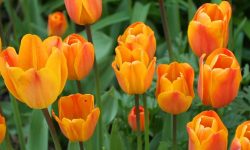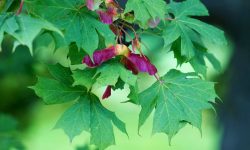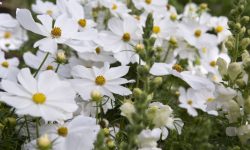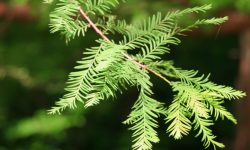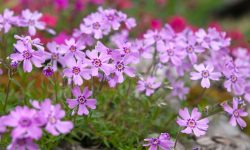There are many plants whose flowers start with the letter O. Among them, the Oriental poppy (Papaver Orientale) stands out with its fiery red-orange flowers. The obedience plant (Physostegia Virginiana), also known as the false dragon head plant, exhibits remarkable versatility in maintaining different shapes. In central Mexico, the Granny Cactus (Mammillaria Hahniana) thrives with small reddish-pink or purple flowers, providing a unique beauty. Orchids (Orchidaceae), diverse and vibrant, thrive in a variety of environments, captivating gardeners with their decorative beauty.
To learn more about Flowers that start with the letter O, please read the article below. We have compiled the 25 most popular flowers that start with the letter O along with their pictures and characteristics.
Different Types of Flowers That Start With O
Ohio Spiderwort (Tradescantia Ohiensis)
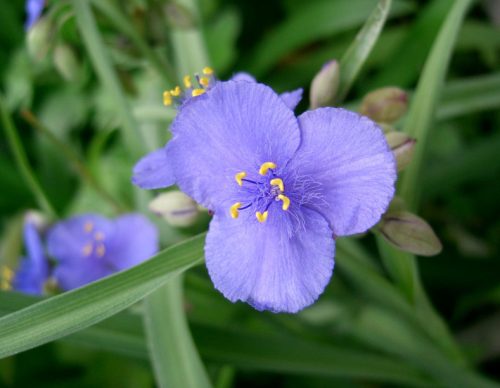
The Ohio Spiderwort, also known as bluejacket, is a prevalent plant native to eastern and central North America. Blooming between March and May, this wildflower boasts a distinctive blue hue, featuring three delicate petals and small yellow stamens. Its habitat is commonly found along roadsides, beside railroad tracks, and in fields or thickets. The Ohio Spiderwort’s widespread distribution and vibrant blossoms make it a captivating component of the region’s natural landscape during the spring months.
Ornamental Onion (Allium Schubertii)
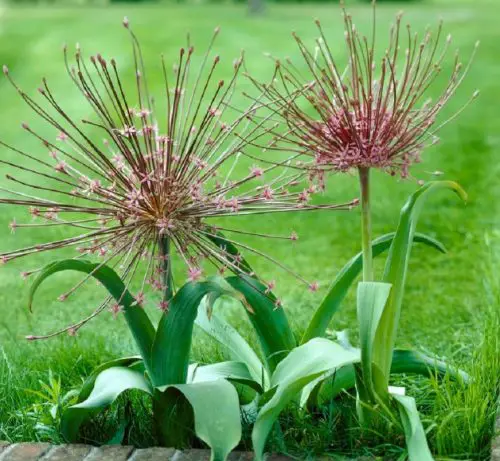
The Ornamental Onion is a unique variety of onion and garlic that goes by several names, including flowering onion and tumbleweed onion. This flowering species lives up to its name, producing a stunning display of star-shaped florets that group together in a spherical shape, mostly in shades of purple. The Ornamental Onion, though it graces the environment with enormous, vibrant green leaves that fade after spring, is best known for its stunning flowers. These decorative onions bring a bit of botanical appeal to gardens and landscapes where they are planted with their unique cycle of foliage and bright flowers.
Oyster Plant (Tragopogon Porrifolius)
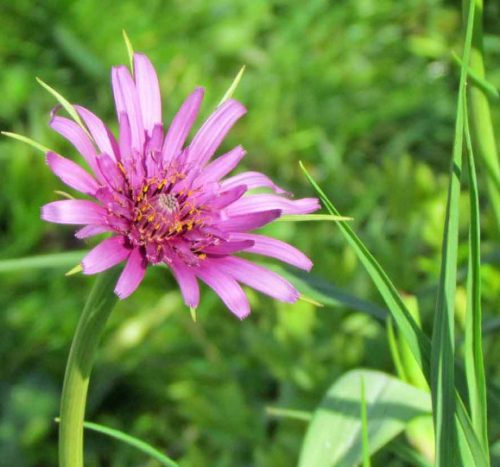
The oyster plant, sometimes called the vegetable oyster, goatsbeard, or Jerusalem star, is a delightful plant that serves as both a source of edible roots and an attractive blossom. Because of the green prickly bracts that surround its usually purple flowers, this biennial wildflower has a unique thorny appearance. Remarkably, the oyster plant doesn’t bloom until it has survived its first year. Apart from its aesthetic value, the plant also has the added attraction of a tasty root, which makes it a special and useful addition to culinary projects as well as gardening.
Oriental Lily (Lilium)
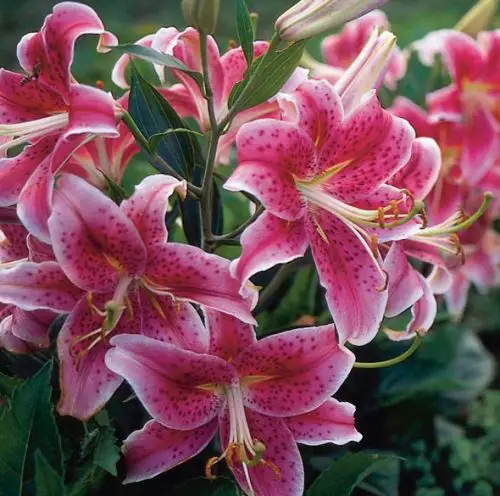
Oriental Lilies are a member of the Lilium genus and are among the most popular and well accepted flowers in the world. These are the lilies that are most often requested to be included in flower beds and bouquets because of their striking size, alluring beauty, and exquisite fragrance. Their varied coloration, which ranges from the traditional white to the vivid shades of pink, orange, yellow, red, and purple, clearly demonstrates that they are real lilies. Oriental lilies add a touch of elegance and diversity to floral displays, whether they are used to embellish gardens or arrangements, which is why flower aficionados all over the world adore them.
Oleander Plant (Nerium Oleander)
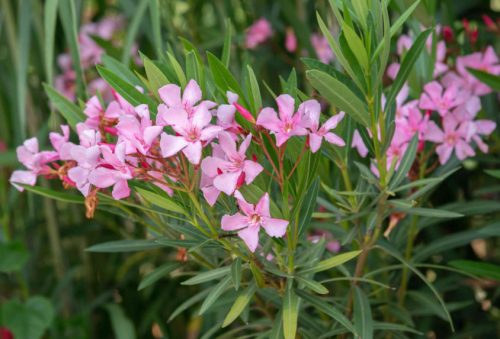
The Oleander Plant, scientifically known as Nerium Oleander, holds a prominent place as a favored ornamental shrub or tree, primarily chosen for its aesthetic contributions to landscaping. With a stature ranging from 2 to 6 feet tall, these plants become enchanting focal points, boasting clusters of magnificent flowers in shades of white, pink, or red throughout the entire year. Despite their widespread cultivation, the exact origins and native habitat of the oleander remain somewhat elusive. Nevertheless, its enduring popularity in landscaping attests to the universal appreciation for the Oleander’s year-round splendor and vibrant floral displays.
Obovate Peony (Paeonia Obovata)
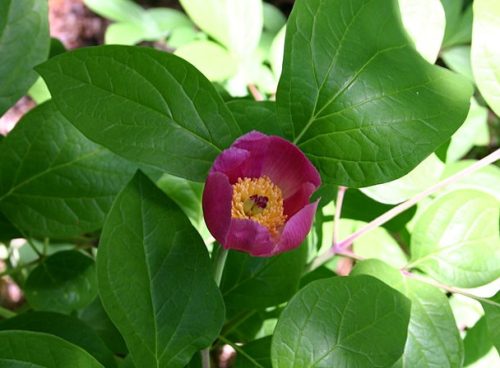
Posing as a beautiful herbaceous perennial, the ovate peony is also known as the round-leaf peony or woodland peony. It was first discovered in Japan’s mountainous areas and has since gracefully expanded throughout Asia and certain areas of Russia. Ovate leaves define this unique flower, which produces solitary flowers on a single plant that range in color from pure white to vivid crimson and soft pink. Typically unfolding their petals in late spring, the enchanted blossoms are a monument to nature’s artistic ability and provide the landscape with a fleeting yet stunning beauty.
Orthrosanthus
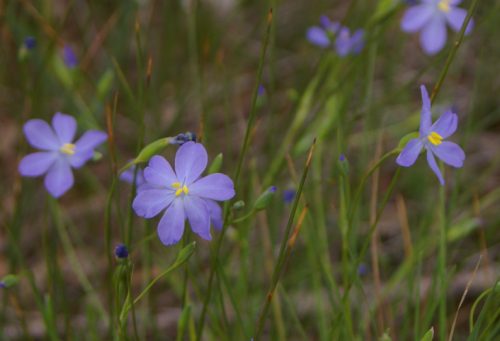
A fascinating genus of flowering plants native to Central and South America, Australia, and Mexico is called Orthrosanthus, or morning irises. These plants, which have unique sword-shaped leaves and enchanting bowl-shaped blue flowers, lend a touch of refinement to a variety of environments. Interestingly, one species in the genus Orthrosanthus departs from the blue standard, bearing exquisite, pure white flowers. Because of their singular form and color, morning irises are incredibly alluring and add a wonderful touch to the natural landscapes in which they grow.
Onosma
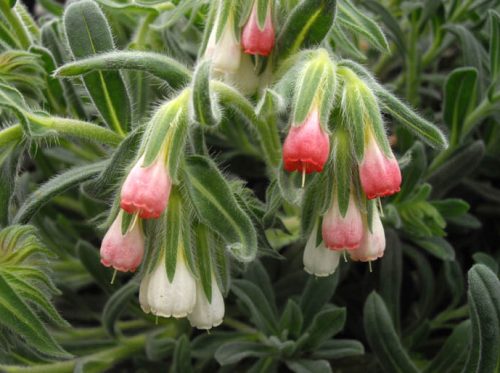
Onosma, native to the Mediterranean and Western Asia, has emerged as a genus of flowering plants that are particularly well adapted to thrive in dry and rocky environments, making them perfect candidates for the garden. stone. Thriving amid challenging conditions, these resilient plants exhibit a unique beauty. The majority of Onosma species have gracefully hanging bell-shaped flowers, displaying a color palette of classic white and sunny yellow. However, nature offers interesting variations, occasionally appearing in purple varieties. In their natural habitat, Onosma not only survives but thrives, contributing to the rugged beauty of arid landscapes and demonstrating the remarkable adaptability of its captivating flower populations. this droop.
Ourisia
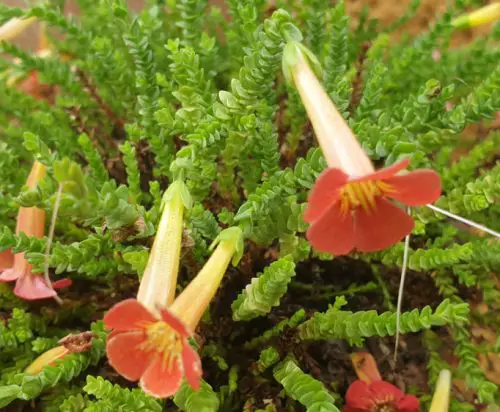
Ourisia, native to western South America and New Zealand, comprises a diverse genus of flowering plants with many species. Some members of the genus are small vines, while others exhibit more vigorous and rapid growth patterns, reaching greater heights. In New Zealand’s unique landscapes, where Ourisia flourishes, the dominant flower color is often white, contributing to the peaceful beauty of the area. However, Ourisia flowers occasionally appear in shades of pink or red, adding a vibrant touch to the vegetation of these distinct ecosystems.
Olsynium
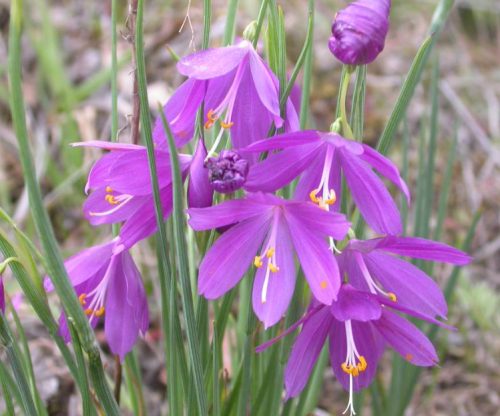
Olsynium, a genus of summer-dormant flowering plants, is native to the hillsides of South America and western North America. These wildflowers come alive, adding color to the landscape from late winter through spring. Their unique ability to bloom during this season makes them a wonderful addition to gardens, when much of nature remains dormant. Olsynium displays bell-shaped flowers that come in a variety of eye-catching colors, with white, purple or pink variations. With the ability to thrive in diverse climates, Olsynium brings beauty to gardens.
Osteomeles
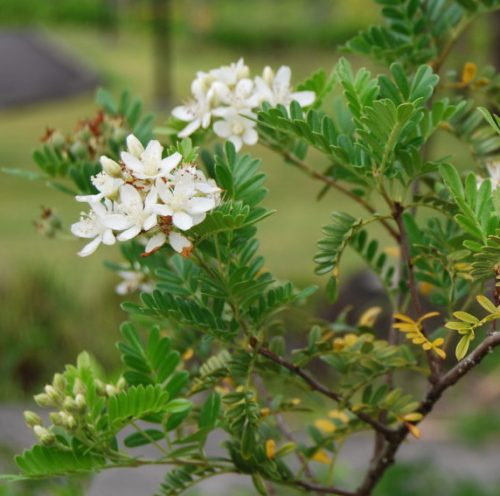
Belonging to the rose family, Osteomele is a genus of flowering plants. Native to East Asia, these shrubs are special not only for the clusters of small white flowers that grace the landscape in June but also for the delicious edible fruits they bear. The combination of decorative beauty and culinary appeal makes Osteomeles a remarkable addition to gardens and landscapes.
Oxalis
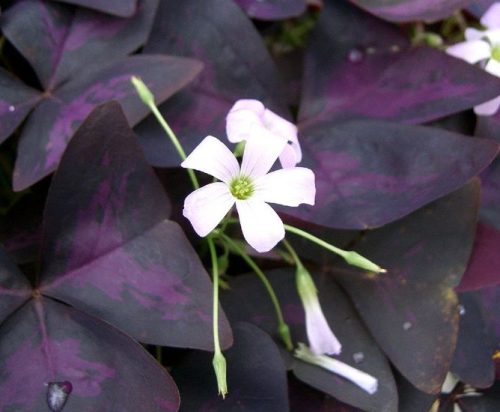
With about 550 species, the Oxalis genus is one of the most diverse and abundant genera in the flowering plant world. Each Oxalis species is identified by its characteristic heart-shaped leaves and its flowers vary in size, shape and color. The false shamrock plant, Oxalis triangularis, is especially notable for its purple heart-shaped leaves adorned with beautiful small white or pale pink flowers.
Othonna
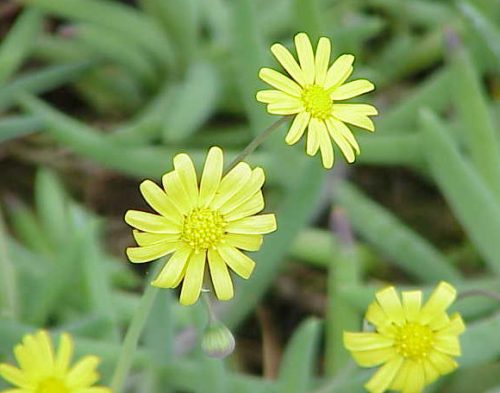
Othonna, a genus of succulent or near-succulent perennials, beautifies the landscape of South Africa and neighboring countries with its diverse presence. With about 90 different species, Othonna has many different variations. Of these, Othonna capensis stands out the most with its bright yellow daisy-like flowers. Othonna’s resilience and diversity make it the flower that grows best in arid conditions.
Orbea Variegata

Known by most as the “star flower,” Orbea variegata is a unique perennial succulent that is indigenous to South Africa’s Western Cape. It grows well in winter rains and yields a distinctive yellow blossom in the shape of a star that is speckled with brown or dark red. Fascinatingly, in southern Australia, this species is regarded as invasive.
Ornithogalum
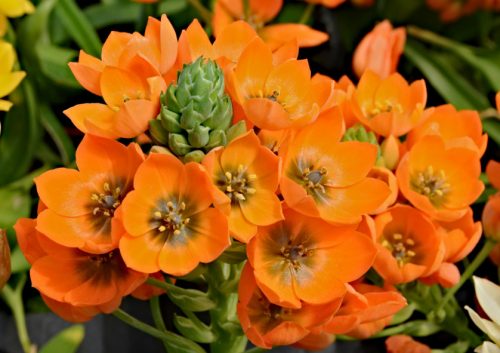
Known as the star of Bethlehem, Ornithogalum is a genus that includes about 150 species native to Europe, Asia and South Africa. These flowers are famous for their star-shaped blooms in spring or summer, which come in a variety of colors, most commonly orange and white. The resilient and beautiful Ornithogalum flower is an outstanding addition to a bouquet. They are hard and durable after cutting.
Old Man Of The Andes (Oreocereus Trollii)
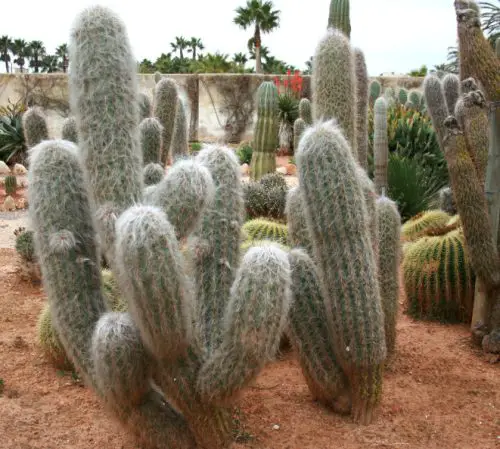
The Old Man of the Andes (Oreocereus Trollii), a special flowering cactus, stands out with its unique features. Named for the long white hairs that shield it from harsh mountain temperatures, this slow-growing cactus will eventually reward patience with brilliant red flowers as it grows several feet tall . It is adapted to the harsh conditions of the Andes Mountains, demonstrating resilience and natural beauty.
Obregonia
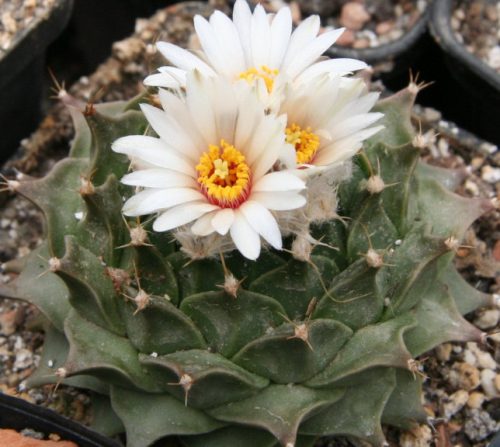
Obregonia, commonly known as the artichoke cactus, is a rare gem among rock cacti. With its slow-growing single stem and rose-shaped triangular bulbs, it adds beauty to the garden. This plant’s appeal is further enhanced by the appearance of delicate white or pink flowers adorned with yellow stamens, making it an ideal addition to any rock garden.
Ox Eye Daisy (Leucanthemum Vulgare)
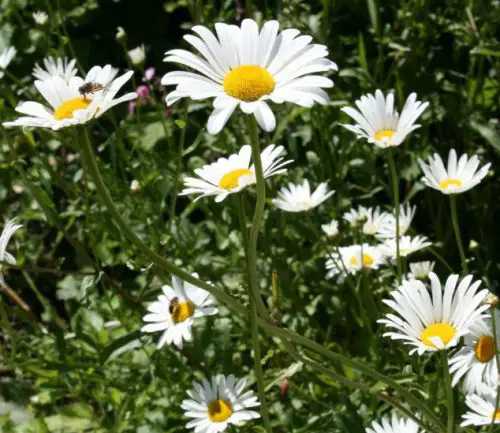
Known by several names, including common marguerite or dog daisy, Ox Eye Daisy grows well in temperate Asia and Europe. Each plant bears three vivid yellow disc florets surrounded by delicate white petals, giving them a striking similarity to daisies.
Osteospermum
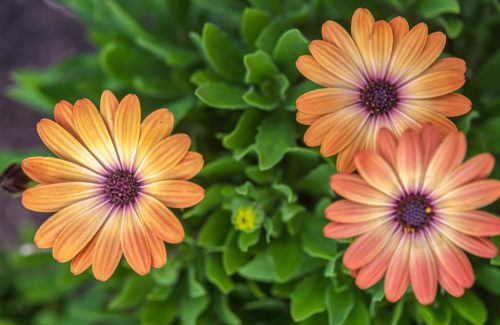
The genus osteospermum, which includes flowering plants, is a member of the sunflower and daisy families. It is often referred to as African daisies or daisybushes. These blooms, which are indigenous to regions of Africa and the Arabian Peninsula, have a look similar to that of giant daisies. They are available in many different hues, such as purple, pink, white, blue, yellow, and cream.
Oregon Grape (Mahonia Aquifolium)
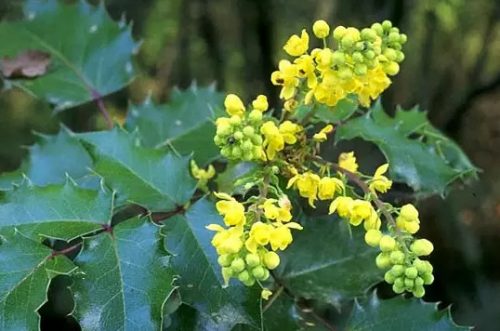
Native to California and Oregon, Mahonia Aquifolium, sometimes known as the Oregon Grape, is a blooming evergreen shrub. With two different leaf types, this shrub attracts deer, birds, bears, and small mammals with its clusters of tiny yellow flowers. These animals are attracted to the yellow flowers, which they then devour together with the purple-blue berries on the plant.
Oriental Poppy (Papaver Orientale)
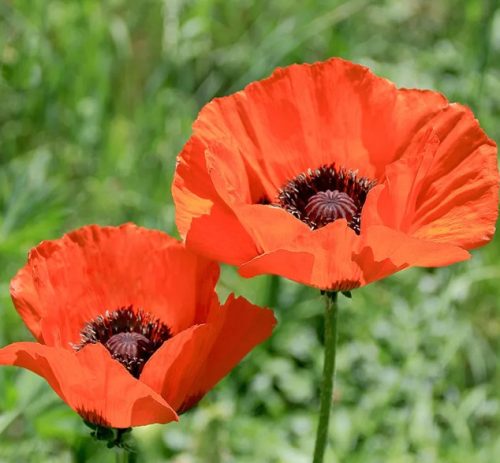
The Oriental Poppy, also known as Papaver Orientale, is a native of the Middle East and the Caucasus. In July, it blooms bright reddish-orange. These poppies save energy by effectively dying after flowering and reemerging as leafy mounds the following spring, thanks to their adaptation to dry, warm climes.
Obedient Plant (Physostegia Virginiana)
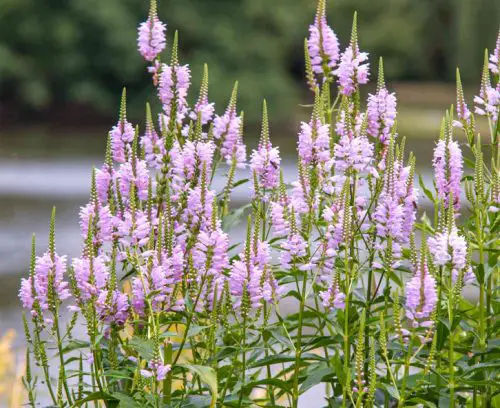
A flowering plant in the mint family native to North America, the Obedient Plant (Physostegia Virginiana) is also referred to as the false dragonhead. As suggested by their name, these plants are often used as attractive plants because of their ability to keep any form that you push their blossoms into and their flexibility to bend in different ways.
Old Lady Cactus (Mammillaria Hahniana)
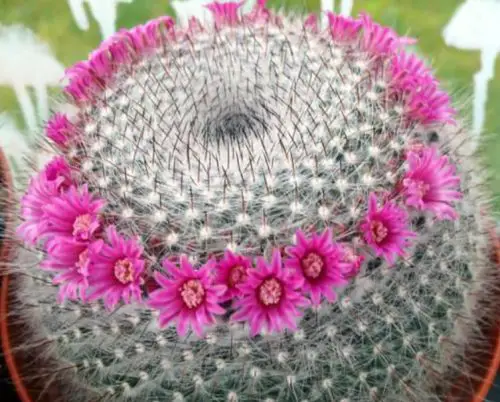
The Old Lady Cactus (Mammillaria Hahniana), which is native to central Mexico, softens its spiky appearance in the summer with its reddish-pink or purple flowers. This flowering cactus can grow to be an astounding 200 years old with the right care.
Orchid (Orchidaceae)
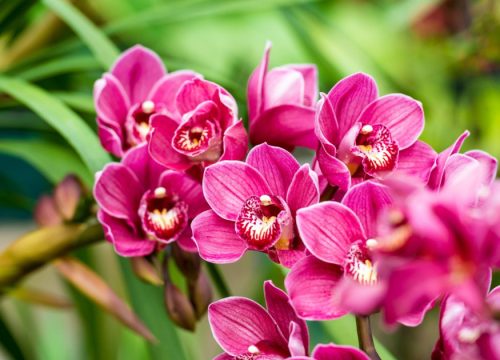
Orchids belong to the Orchidaceae family, one of the two largest families of flowering plants, bringing many values to gardeners. Orchids grow well in soil, in hanging baskets or next to rocks. They come in a variety of colors, including white, pink, purple, blue, yellow, and red. Orchids are popular houseplants that can be grown by gardeners of all levels of experience.

